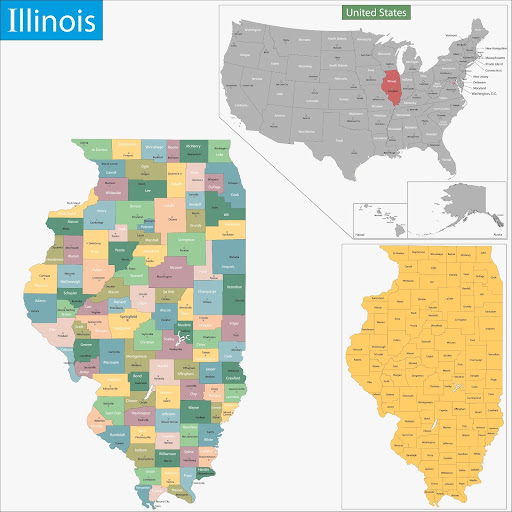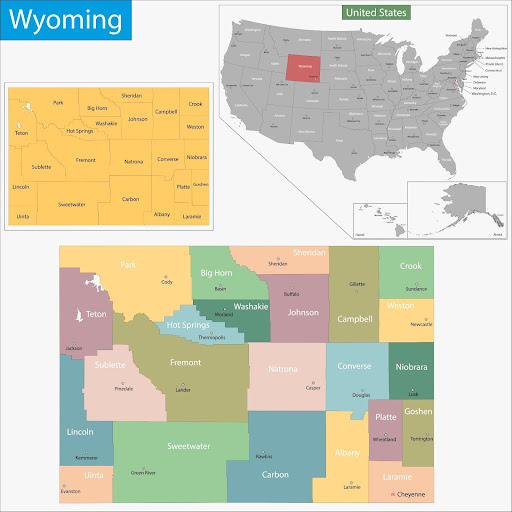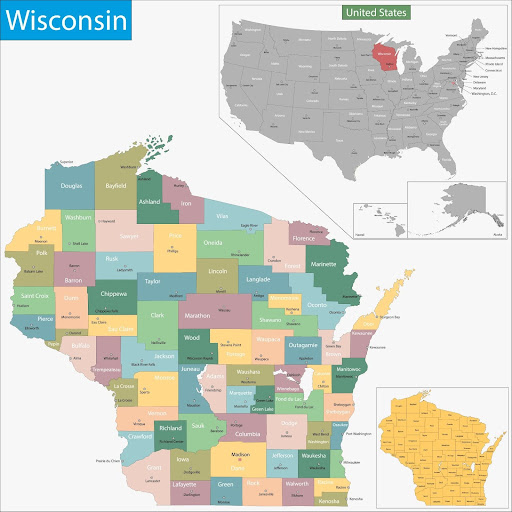Table of Contents
Illinois wildfires move fast, burn hot, and catch agencies off guard when conditions align. For fire investigators, that means the job here is about precise, local context: agricultural burns that spiral out of control, smoldering prairies reborn into fire-adapted ecosystems, and wind-driven grassfires that rip through townships in the blink of an eye.
This guide breaks down Illinois’s wildland fire resources and landscape from an investigator’s lens: who responds, when fires tend to spike, where the training hubs are, and how to access the tools, maps, and agency contacts you’ll need when the call comes in.
Browse our wildland firefighting resources library to go further.
Live Incident Updates & Maps
Use this live tool to monitor active wildland fires, prescribed burns, and air quality updates in Illinois:
State Overview
Illinois sees hundreds of wildland fires each year, most of them human-caused, fast-moving, and often unreported until late stages. While lacking the elevation and fuel loading of Western states, Illinois presents its own investigative challenges:
- Prairie Fuels: Dry grasslands and agricultural burn-offs are common sources of rapid flame spread.
- Urban Fringe Fires: In the collar counties around Chicago, wildland-urban interface (WUI) areas pose growing risks, especially where unmanaged lots meet residential zones.
- Forest Preserves & Wetlands: These areas, especially in spring and fall, can hold heat in downed fuels and organic matter long after surface flames die out.
For investigators, the takeaway is clear: don’t underestimate low-profile fuels. The ignition source might be small, a tossed cigarette, a spark from farm machinery, but the impacts, especially during dry spells, can escalate quickly.
Wildfire Season Timeline
Illinois doesn’t follow a classic Western wildfire calendar, but it has distinct danger windows:
- Spring (March–May): This is peak fire season. Dormant grass, dry leaf litter, and wind combine for fast-spreading surface fires. Many are linked to agricultural burns, debris disposal, or recreation.
- Summer (June–August): Fire potential drops slightly due to greening vegetation, but drought years tell a different story. Investigators should watch for accidental ignitions near powerlines, fireworks incidents, and lightning strikes in conservation areas.
- Fall (September–November): A second spike emerges as vegetation cures and prescribed burns increase. Investigators often work cases related to hunting activity, campfires, and neglected burn piles.
Key State Agencies Involved
Illinois wildland fire investigation often requires coordination across local, state, and federal players:
- Illinois Department of Natural Resources (IDNR): Oversees fire management in state parks, forests, and nature preserves. Their Division of Forest Resources supports prescribed burns and fire suppression in protected areas.
- Illinois State Fire Marshal (OSFM): Leads statewide fire investigation training and standards. Provides mutual aid coordination and works closely with local departments during large-scale events.
- Illinois Emergency Management Agency (IEMA): Coordinates emergency response and wildfire preparedness planning under the State Emergency Operations Center (SEOC). May be involved when wildland fires threaten infrastructure or public health.
- U.S. Forest Service – Shawnee National Forest (Southern Illinois): Federal fire incidents within Shawnee NF are managed under NWCG protocols. Investigators working federal lands must follow USFS Law Enforcement protocols and coordinate with regional Fire Management Officers.
Local Wildland Firefighting Resources
Initial attack in Illinois typically begins at the township or municipal level. Many rural fire departments maintain wildland gear and seasonal readiness protocols, especially in southern and central counties.
List of Local/State/Federal Fire Response Agencies
Contact Numbers and Emergency Links
- Report a Wildfire or Outdoor Burn Out of Control: 911
- IDNR Forestry Division (Springfield Office): (217) 782-2361 | dnr.illinois.gov
- Illinois State Fire Marshal: (217) 785-0969 | sfm.illinois.gov
- Shawnee National Forest Fire Dispatch (USFS): (618) 253-7114
- IEMA SEOC Operations: (217) 782-2700 | iema.illinois.gov
Training & Volunteering
If you’re interested in wildland fire management, Illinois offers various training programs and volunteer opportunities.
NWCG-Approved Academies and Centers
Volunteer and Seasonal Training Opportunities
- Illinois Emergency Firefighter (EFF) Program: Seasonal hiring coordinated through IDNR or local VFDs. Red card training provided to EFFs, with some serving as field observers and patrol support.
- Prescribed Burn Fire Council: Forest preserve districts train and deploy volunteers for burn operations, fuel monitoring, and public education. Great entry point for future wildland investigators.
- IFSI Explorer Program: Targets students and new recruits with hands-on exposure to fire suppression and incident analysis techniques.
Stay Informed on Illinois’s Wildland Fire Landscape
Illinois might not make national headlines for massive wildfires, but complacency here is dangerous. Rapid urban expansion into vegetative corridors, climate-driven drought spells, and aging electrical infrastructure all raise the stakes.
For investigators, that means staying sharp.
- Know your fuel types and how they change across the state.
- Stay current on MABAS mobilization protocols.
- Understand how prescribed burn operations are managed, and when they go wrong.
- Get familiar with your local forest preserve district’s fire management staff.
FAQs
How do I report a wildland fire in Illinois?
Dial 911 immediately. Be prepared to provide coordinates or the nearest cross street.
Who has investigative authority over wildfires in Illinois?
It depends on land ownership and jurisdiction. Local fire departments or sheriff’s offices often initiate. For state-managed land, IDNR may assist. For federal land (Shawnee NF), the USFS handles cause determination.
Can I conduct a controlled burn on my property?
Possibly, but you’ll need a burn permit and must follow county-level ordinances. Always coordinate with your local fire protection district and check for red flag warnings or active burn bans.










